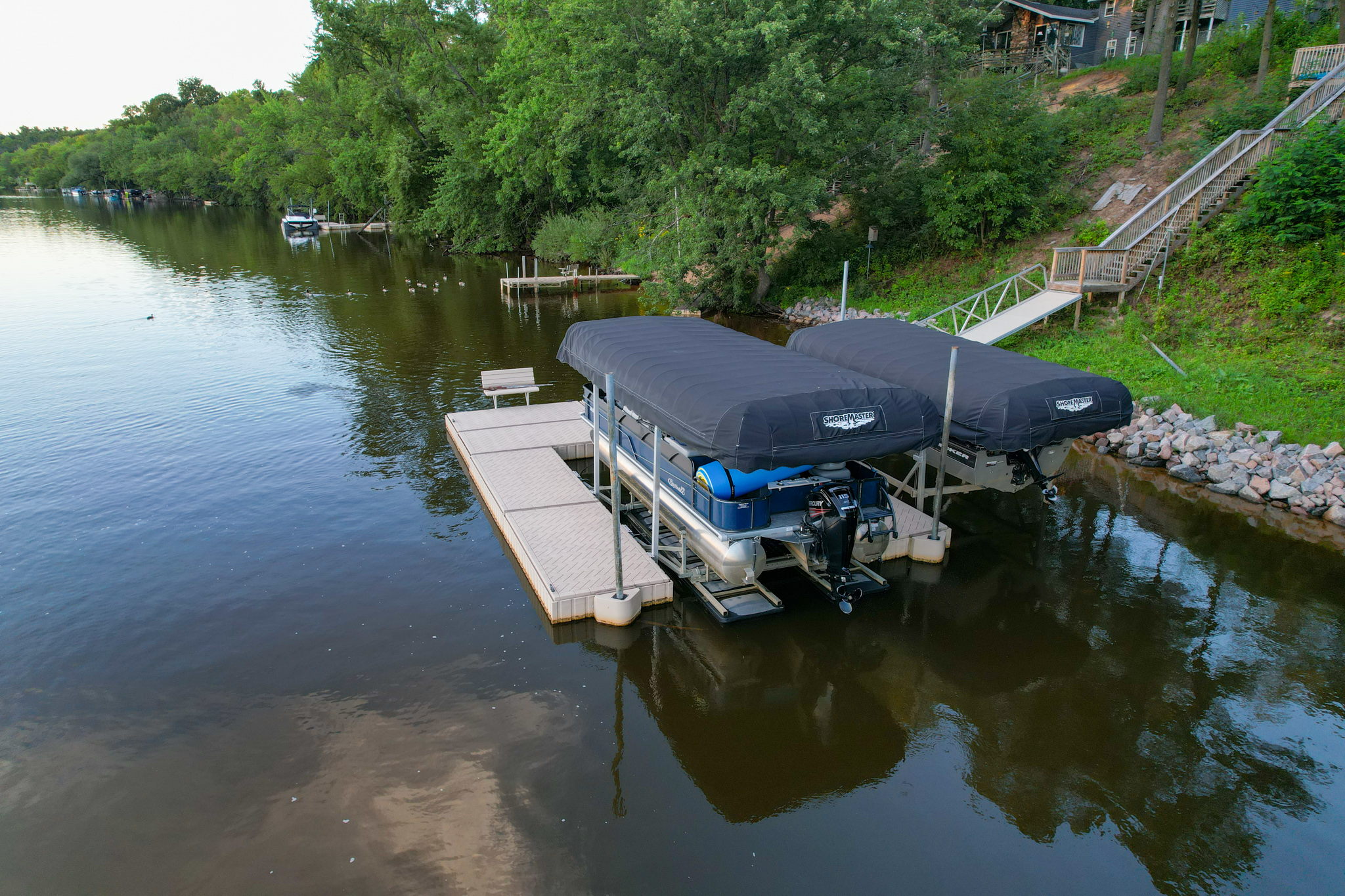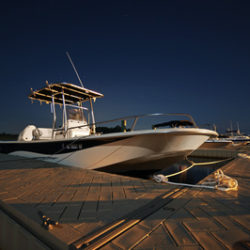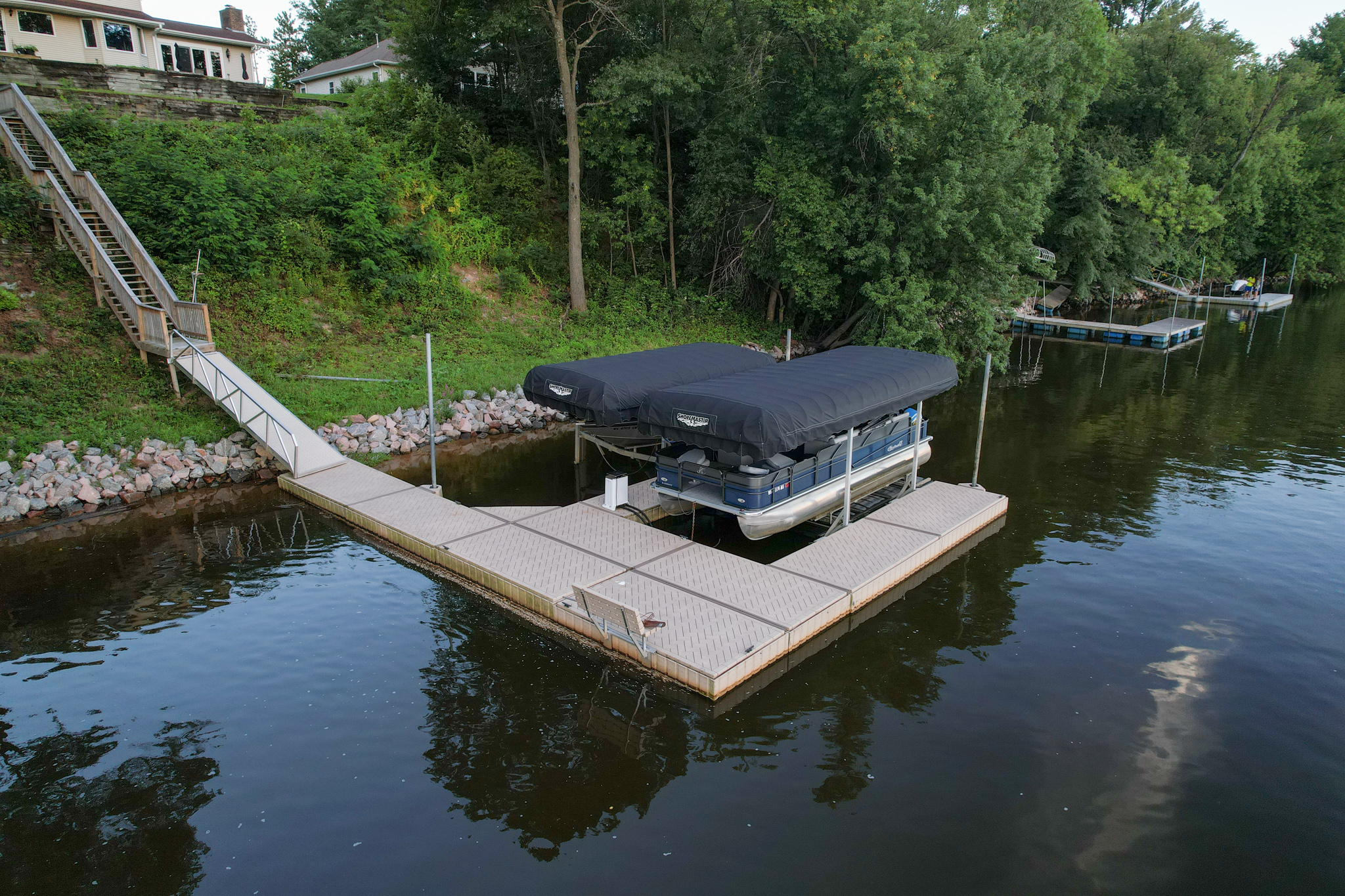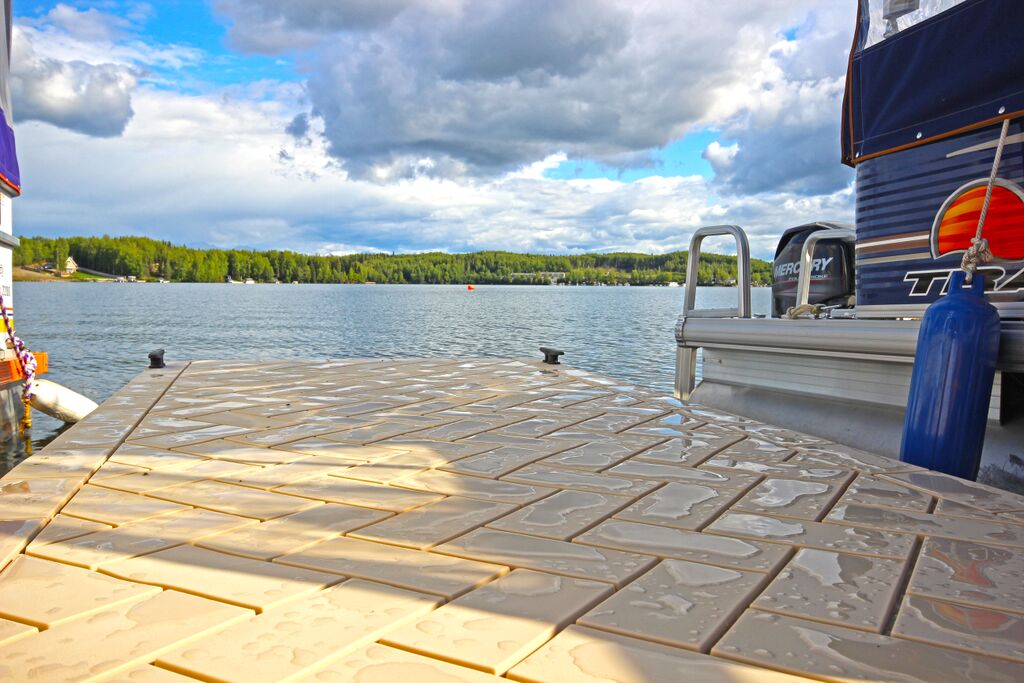Posted on Nov 23, 2018
Written by PolyDock Products Marketing
One of the first things people ask us about floating dock systems is, “how stable are they?”, and to that question, we always respond with something along the lines of; “The stability of any floating dock is determined by a wide array of factors.” You see, the purpose of this post is not to get too technical when it comes to floating dock stability, rather, we simply want to show you what makes PolyDock one of the most, if not the most stable floating dock systems in its class. To keep things simple, which is especially important on a Monday, we’ll try to describe what makes PolyDock floating docks so stable in laymen’s terms, with just a little marketing speak thrown in to really drive the message home (we hope). However, If you’d like to jumble your brain with floating dock technical know-how, fancy words, and (gasp) mathematical formulas and calculations in an attempt to figure it all out.
If you took the bait and read the aforementioned 1916 edition of the American Civil Engineers Pocket Book, congratulations, you don’t need to read the rest of this blog post because you can probably, by now, surmise what makes PolyDock floating dock systems so stable, plus, you might now be ready for the Civil Engineering PE Exam and probably don’t have time to read such a simple blog post anyway.
The Secret to PolyDock Floating Dock Stability is all in the Design
Floating Dock Section Size:
The stability of the PolyDock floating dock system is built into the design of the dock sections. To start, PolyDock floating dock sections are actually larger than their actual published sizes. For instance, PolyDock’s 5 x 10 dock section (some people call them a 60 x 10 floating dock) actually measures 65.5” x 123”. So the 5 x 10 PolyDock section actually measures about 5’ 5” wide by 10’ 3” long. This means that not only are you getting more value for your dollar when you calculate your floating dock price by total square footage, you are actually getting more stability thanks to the additional width of the dock section. This is true for all section sizes of PolyDock.
PolyDock Section Sizes and Specifications Chart
*Buyers Note: Make sure to ask a competitive manufacturer or dealer for their actual floating dock section sizes to see what you are paying for and then do the math to determine exactly what you are paying per square foot of dock. You’ll be surprised by the additional value you get when you choose to design your residential dock or commercial marina with PolyDock 4 x 10 or 5 x 10 dock sections. This is a great way to do a true cost comparison of any floating dock system.
Floating Dock Trapped Air Compartments:
*Recessed Area / Trapped Air Design
Underneath each section of PolyDock floating docks, and ShorePort drive-on jetski lifts are compartments molded into the dock section that serve to capture and retain trapped air. PolyDock Products utilizes this trapped air design to help improve overall dock stability and buoyancy. The trapped air design means PolyDock is likely to be much, much more stable than your average home-built floating dock system that employs barrels, or tubs, as its primary source of flotation. Even when a barrel or “tub style” floating dock uses water in the barrels for ballast, the overall stability is not as great because of the shape and design of the flotation. The unique design of PolyDock floating dock’s trapped air Compartments acts in two ways to make it one of the most, if not the most stable floating docks in its class. First, PolyDock’s trapped air compartments actually add to the overall flotation capacity of each dock section. Second, the design of PolyDock’s trapped air compartments creates a negative force, or suction, that acts as a vacuum to keep the dock firmly positioned in the water. This means the trapped air compartments not only add buoyancy to mitigate the dock’s downward force into the water as you walk on it, but the vacuum created by the trapped air compartments also act to keep the opposite end or side of the dock from rising up –this is where true dock stability comes from. To get a better idea of what we’re talking about, try to think of a floating dock system’s basic flotation capacity as its “Upward Stability” (this prevents the dock from sinking), also, try to think about the amount of suction created by the recessed areas in the dock’s design as it’s “Downward Stability” (this prevents the dock from lifting up or rising out of the water). PolyDock floating docks have both upward and downward stability, whereas a barrel style or tub-style floating dock only has upward stability. This upward and downward stability, or “Dual Stability” is one of the most important components of the superior stability of the PolyDock floating dock system and the ShorePort drive-on jetski port, and it’s something that you won’t get with some competitors dock systems and most home built floating docks.
Floating Dock Walking Surface Design:
If you’ve ever seen a PolyDock floating dock system up close, and by close, we mean walking on it with your bare feet, then you already know why most PolyDock owners chose PolyDock; it has an attractive, herringbone brick pattern design that feels good on bare feet and looks great. While the look and feel of the floating dock surface are important, especially if you demand a premium high-quality surface finish as you get with PolyDock, it’s what lies beneath the surface of the PolyDock floating dock system’s herringbone brick pattern walking surface that helps to make it so stable.
“Kiss-Offs” Bolster the Walking Surface
Just beneath the ultra-firm, the non-spongy walking surface of each PolyDock section are hundreds of “Kiss-Offs”. These Kiss-Offs are an important part of the overall structural integrity of the PolyDock floating dock system and a major contributor to the sense of stability one can experience when walking on the PolyDock system. To visualize what the PolyDock Kiss-Offs look like and to see their location on a PolyDock section, take a look at this image.
How Many Kiss-Offs Does The PolyDock Have?
To be fair, we’ve never counted the number of kiss-offs that the competitor dock sections have, or if they even have any at all, but to make it easy for you to compare, please take a look at the handy chart below that shows you the exact number of kiss-offs on each section of PolyDock. From there you can make your own comparisons. To really get the true effect, and understand exactly what Kiss-Offs mean to dock stability and walking surface firmness, we recommend that you actually walk on each dock system that you are considering. We think you’ll absolutely fall in love with the experience you’ll get by walking on a PolyDock floating dock system, an experience that lets you know you’re walking on a premium floating dock system.
PolyDock Kiss-Offs
PolyDock Section Size = Number of Kiss-Offs
3 x 10 Section = 160 Kiss-Offs
4 x 6 Section = 108 Kiss-Offs
4 x 10 Section = 192 Kiss-Offs
5 x 10 Section = 282 Kiss-Offs
6 x 8 Section = 232 Kiss-Offs
4’ Corner = 36 Kiss-Offs
In addition to supporting provided by the kiss-offs, the surface of every PolyDock floating dock section benefits from the additional structure and support provided by the herringbone brick pattern. Each “brick paver” on the surface of the PolyDock contributes to the overall firm walking surface because of the additional polyethylene material and structure created by each brick. For reference, each brick paver on the surface of the PolyDock section measures 4” x 8” and is approximately 1/2” deep. The space between each brick is approximately 3/8”. In addition to the extra structure provided by the herringbone brick pattern, the surface of each brick features a shot peen finish to create a slip-resistant surface. All of this adds up to an incredible walking experience for owners and users of the PolyDock floating dock.
The Floating Dock Connector Design:
Don’t trade safety and stability for a “flexible” dock coupler
The design of the PolyDock Dock Connector provides another element that contributes to the overall strength and stability of the PolyDock floating dock system. No one wants to walk on a dock system that flexes and moves with waves and foot traffic. If the connectors or couplers of your dock system require special tools to install and are flexible enough to allow the dock to move with the wave action, it’s a good bet that you’re trading off a certain amount of safety and dock stability for that flexibility. One might even argue that if your modular floating dock is installed in water that is so rough that your dock connection system needs to allow enough flexion so that your dock system flexes and moves with the waves, you may have the wrong style of dock system installed. You do have other floating dock options that won’t require you to concede the stability or safety of your floating dock system.
Connectors Span the Full Length and/or Width of the Dock Sections
The top and bottom of the PolyDock dock connector are manufactured from high-density polyethylene to be incredibly durable with the perfect balance of flexibility and stiffness. Each Connectorspans the full length or width of the PolyDock section to better transfer wave energy while providing a more durable and secure floating dock connection and improved total dock system stability. PolyDock connectors also float so they will not sink to the bottom of the lake or river if you accidentally drop one during installation.
Composite Connector Rod Design
Each PolyDock connector uses ultra-durable composite connector rods to secure the top and bottom components of the connector together. The composite connector rods are designed to be incredibly durable and remain tight to reduce the chance of loose connectors. The composite connector rods are fastened to the bottom connector to make installation quick and easy, and best of all, PolyDock connector installation requires NO SPECIAL TOOLS.
Stainless Steel Hardware
In addition to the composite rods which resist rotting and corrosion, all PolyDock connector hardware is corrosion-resistant stainless steel to provide you with an easy-to-install and long-lasting dock-to-dock connection system. The PolyDock dock connectors are tightened from the top of the dock with an ordinary hand wrench, ratchet, or cordless drill/impact, and do not require you purchase any special installation tools. Premium hardware is just another small component that adds up to create PolyDock Products’ superior stability.
Floating Dock Anchorage Design:
When it comes to anchoring your floating dock system or drive on Jet Ski Port, nothing is more important than options. Having a wide range of anchorage options to choose from makes all the difference in the world, especially when it comes to choosing the right anchorage to get the most stability out of your floating dock system.
Pipe Brackets –
The most common style of floating dock anchorage is the typical galvanized steel pipe driven into the lake or river bed. The dock system will be held in place by the pipes and the pipe brackets will allow the dock to float up or down to accommodate changes and fluctuations in water depth and reservoir summer or winter pools and drawdowns. Pipe brackets tend to provide a very stable floating dock system because there is generally less “play” or “slop” in the system. The galvanized steel pipes that are driven or augured into the lake bottom go through the pipe brackets with approximately a quarter to a half an inch of free play which keeps the dock held firmly in place for reduced side-to-side movement and added stability while still allowing vertical travel to accommodate water fluctuations.
Pile Hoops –
Another common floating dock anchor option is Pile Hoops. PolyDock Products Pile hoops are designed to fit a wide range of piling sizes and can be positioned anywhere along with the PolyDock system for easy installation no matter the spacing between each piling, or the diameter of the piles.
Stiff Arm anchorage allows good stability without requiring pipe to be driven or augured into the lake or river bottom.
Deadweight Anchors –
Deadweight Anchors are a simple way to anchor PolyDock in very deep water or in areas with hard or firm lake or river bottom substrates.
The Secret To Floating Dock Stability Is A Good Design. PolyDock Is Designed For Stability.
Good design is paramount to an incredibly stable dock system, and PolyDock Products floating dock systems are designed for stability.
In the world of floating docks, where stability is key, the research by Konovessis, Chua, and Vassalos (Konovessis et al., 2014) and Virgin and Erickson (Virgin & Erickson, 1994) offers some fascinating insights. Konovessis and his team introduced a probabilistic approach to assess the stability of offshore structures, including floating docks, considering various environmental conditions and damage scenarios. This kind of rigorous evaluation is what underpins the stability of PolyDock floating docks, ensuring they're up to the challenge of the ever-changing marine environment. On the other hand, Virgin and Erickson's exploration of dynamic stability through energy comparisons opens up new perspectives in dock design. Their innovative approach to assessing stability risks is reflected in how PolyDock products are engineered, ensuring that our docks aren't just stable but also adaptable and safe, even in the most dynamic of water conditions. It's all about combining advanced research with practical design to create docks that you can trust, no matter what the water throws at them.
We hope this blog post helps you understand why PolyDock floating dock systems are so stable compared to competitor’s floating docks and nearly all styles of the home-built barrel, tub, or traditional wood floating docks.
We also hope this blog post helps you consider all of your options when it comes to choosing a floating dock system, especially if dock stability is an important consideration for your residential dock system or commercial marina floating dock project. PolyDock Products dock sections and ShorePort Waverunner Ports feature many positive attributes that we didn’t even cover in this post such as the durability of our materials (PolyDock Products feature UV-8 inhibitors for superior protection from sun / UV damage) or the tensile strength and impact ratings or the dock sections.
If you would like to learn more about PolyDock Products’ engineering specifications for floating docks, you can check out our specifications pages to learn more.
If you have any questions about PolyDock products, you can always reach us at 1-844-295-1026, or find your local PolyDock Products dealer or distributor by using our PolyDock Dealer Locator.
Konovessis, D., Chua, K., & Vassalos, D. (2014). Stability of floating offshore structures. Ships and Offshore Structures, 9, 125 - 133. https://www.tandfonline.com/doi/abs/10.1080/17445302.2012.747270
Virgin, L., & Erickson, B. (1994). A new approach to the overturning stability of floating structures. Ocean Engineering, 21, 67-80 https://www.sciencedirect.com/science/article/abs/pii/0029801894900302?via%3Dihub




